ePostcard#163: Eavesdropping on the Brain: Marine Mammals
Photo Credits: All photographs in this ePostcard series unless otherwise credited are courtesy of Audrey DeLella Benedict. Female Cape fur seals (above) napping together. (Namibia, 2012)
EAVESDROPPING ON THE BRAIN: MARINE MAMMALS
All mammals and birds sleep, benefiting in profound ways from restorative sleep adaptations that support energy conservation, physiological processes, metabolism, immune functions, memory, and learning. This series of ePostcards focuses on adaptive sleep behaviors in marine mammals and birds, with special emphasis on long distance migrants in both groups.
My own restorative sleep challenges inspired my interest in learning how other mammals and birds sleep, especially those species that spend much of their lives at sea or endure long distance migrations between their breeding and overwintering areas. Whether an animal lives on land or in the sea determines sleep behaviors and how much sleep that animal needs to survive in the environment to which it is adapted. Modern humans have it pretty easy because we are able to manipulate our environments and the places where we can safely benefit from restorative sleep.
Marine mammals are defined as aquatic mammals that rely on the ocean and other marine ecosystems for their existence. This remarkably biodiverse group, which includes the Pinnipedia (eared seals, true seals, and walrus), the Cetacea (whales, dolphins and porpoises), Sirenia (manatees and dugongs), Mustelidae (sea otters), and Ursidae (polar bears), are unified as a distinct mammalian group only by their reliance on marine environments for feeding and survival.
Marine mammal adaptations to an aquatic lifestyle vary considerably and are considered species-specific in nature. Cetaceans and sirenians, for example, are fully aquatic and are obligate water dwellers. Walrus, true seals and eared seals are semiaquatic, spending the majority of their time in the water, but needing to return to land for important activities such as mating, breeding and molting. In contrast, sea otters and polar bears are much less adapted to an aquatic lifestyle.
Cape fur seal (South Africa, 2012). Note the extra stiff whiskers, or vibrissae, which serve as sensitive and highly adaptive, tactile hairs that aid in navigation, locomotion, situational awareness, exploration, hunting, and social touch.
SLEEP ADAPTATIONS AND PATTERNS IN MAMMALS
Mammalian sleep patterns are generally categorized as either monophasic or polyphasic. Monophasic sleep describes animals who generally receive their sleep in one concentrated time period. Humans are an example of monophasic sleepers. Our circadian rhythms encourage us to sleep for extended periods at night and be active and alert during the day. Polyphasic sleepers, on the other hand, tend to sleep in multiple periods throughout a 24-hour cycle. Polyphasic sleep is more common, as many animals need to maintain some level of vigilance against predators. However, if predator threats are minimized in any given setting, many terrestrial mammalian species can also experience intervals of monophasic sleep. Bats are often cited as an example of extreme sleep duration in mammals, with some species sleeping for up to 20 hours a day.
Air-breathing marine mammals, but especially the cetaceans, which are confined to their aquatic world, face multiple challenges determined by the highly variable physical properties of their aquatic environment. They must surface regularly for breathing and to prevent inhaling water into the lungs during respiration, factors that exclude immobility, which is a key feature of sleep in terrestrial mammals. Mobility is extremely important because the thermal conductivity of water is many times greater than that of the air. Aquatic mammals must have some combination of behavioral and physiological adaptations that prevent excessive heat loss or overheating by maintaining postures or motions that effectively avoid prolonged periods of immobility while sleeping in water.
The sleep patterns of aquatic and semi-aquatic mammals are entirely different from those of terrestrial mammals. As we learn more about marine mammal sleep patterns, we also know that they don’t have the same requirements for long periods of undisturbed sleep that we do. Marine mammal researchers suggest that three life-sustaining factors have played a key role in the evolution of the sleep patterns in modern aquatic mammals: (1) the need to come to the water surface to breathe, (2) more efficient monitoring of the environment for predators, and (3) thermogenesis.
We know that all land mammals exhibit two distinctive sleep stages—rapid eye movement sleep (REM) and slow-wave sleep (SWS or non-REM), which are usually identifiable based on the results of an electroencephalogram (EEG), electromyogram (EMG), electrooculogram (EOG), and the species-specific pattern of heart and breathing rate. Rapid eye movement (REM) sleep is characterized by cortical arousal, rapid eye movements, muscle jerks, muscle tone suppression, and increased heart and breathing rate variability, among others. During the stage known as slow-wave sleep (SWS), the brain is less active, which saves the brain energy needed for REM sleep. Although most marine mammals experience rapid eye movement (REM) sleep, the primary function of REM sleep is still debated among sleep scientists. Current research suggests that aquatic mammals have absent or reduced REM sleep and that semi-aquatic mammals have reduced REM sleep when in the water. A few theories have been proposed to explain this reduction, but many questions remain.
The phenomenon of unihemispheric slow-wave sleep (USWS)—the ability to sleep with one cerebral hemisphere at a time, while keeping the other hemisphere awake—is common in some mammals and birds. Unihemispheric sleep, for example, allows cetaceans to surface without awakening and the Otariidae pinnipeds (eared seals) to maintain a characteristic sleeping posture at the surface. Dolphins and porpoises (cetaceans) have only one sleep state—unihemispheric slow-wave sleep (USWS). It has been suggested that USWS allows vigilance and motion and facilitates breathing controlled by the waking hemisphere.
Semiaquatic pinnipeds can sleep both on land and in water. The pattern of sleep in fur seals and sea lions (Otariidae eared seals) is similar to that in terrestrial mammals when they are on land but similar to cetacean sleep patterns when they are in the water. Sleep patterns in “true seals” (Phocidae) and walruses (the only representative of the Odobenidae family) are largely similar to those in other semiaquatic mammals, with the exception of the long apnea events (cessations of breathing) that allow them to sleep in water at depth and survive predation and harsh freezing conditions.
On a visit to a Cape fur seal colony (see photos above and below) along Namibia’s Skeleton Coast, I delighted in observing these female Cape fur seals taking a group nap. As I set up to photograph, I saw multiple behavioral examples of “safety in numbers” and “situational vulnerability awareness” wherever I looked along the beach. I was surprised to learn that a small population of desert-dwelling African lions, the only lions known to target marine life, had adapted to hunting seals and seabirds in the face of declining prey availability in Namibia’s harsh desert landscape.
Desert lions became locally extinct in 1990 due to persecution by farmers protecting their livestock. By 1997, a pride of lions had returned to the Skeleton Coast region and lion numbers have been increasing ever since. The area now sustains approximately 130-150 of these so-called desert lions. The Skeleton Coast spans the coastal backbone of Namibia and is the driest place in sub-Saharan Africa, receiving as little as 0.2 inches of rain a year. The desert lion’s usual prey of oryx and ostriches have largely disappeared. The nearby ocean, in contrast, is rich in marine wildlife, including the roughly 1 million Cape fur seals that breed along the the shoreline, and a multitude of cormorants, flamingos, and seabirds. The lions also feed on stranded whales and marine mammals and birds that have washed ashore.
SLEEP BEHAVIOR IN MARINE MAMMALS
Many of the remarkable advances in ecophysiology and biologging of marine wildlife species and their sleep habits are based on technologies developed for human sleep studies, which rely on detecting small signals over multiple days and with minimal disruption of natural behavior patterns. I didn’t realize until I started researching this ePostcard series how many daunting technological and environmental challenges scientists must overcome to successfully monitor sleep-related physiological and neurological behaviors in marine mammals. It seems difficult enough to modify data logging devices to fit free-ranging terrestrial mammals or birds, much less to use these devices on animals that spend all or good portion of their lives in the world’s oceans. I certainly didn’t expect to learn, as a sufferer of severe sleep apnea myself, that many marine mammals experience apnea events that may be beneficial and have evolved as an adaptation to sleeping in the water.
Electrophysiological sleep recordings rely on detecting small changes in brain activity (several orders of magnitude smaller than typical heart signals) and benefit from multiple-day recordings of mammals and birds in their natural habitats. These studies rely on the use of an electroencephalogram (EEG) to record changes in brain activity from “large amplitude” (~ 75 μV peak-to-peak amplitude in humans), slow-wave sleep (SWS: 0.5-4 Hz) to small-amplitude, high-frequency activity during waking or rapid-eye-movement (REM) sleep. Sleep states are distinguished from one another using EEG (brain) activity, electrooculogram (eye) activity, electromyogram (muscle) activity, accelerometry, and heart rate variability.
Does rapid eye movement (REM) sleep play any role at all for marine mammals? The absence/reduction of REM sleep at the surface in marine mammals is adaptive primarily because it minimizes the time when the animal is less responsive and most vulnerable to predation. The suppression of REM sleep also minimizes the time when the animal is unable to effectively regulate its body temperature. Semiaquatic otariids (the eared seals) typically utilize the terrestrial mammal sleep pattern of bihemispheric slow-wave sleep (BSWS), immobility, regular breathing, and REM sleep when on land, but are capable of switching to a totally aquatic, cetacean mode of unihemispheric (asymmetrical) short-wave sleep (USWS, sleep in motion, and reduction of REM sleep) when in the water.
Movement during unihemispheric sleep facilitates muscle thermogenesis and postural thermoregulation. This pattern can be achieved only in open (ice-free) waters, which is the typical habitat for the majority of cetaceans and all otariids (eared seals). Sleeping at the surface requires maintaining continuous vigilance to minimize the risk of near-surface predators. It appears most likely that unihemispheric short-wave sleep (USWS) has evolved as a neurophysiological mechanism, allowing cetaceans and otariids to maintain movement and continuous vigilance, while allowing slow waves to be present in at least half of their brain at a time.
Most of the phocids (true seals) and the walrus inhabit cold waters of the subpolar and polar regions. Anatomical and physiological adaptations allow them to manage their body temperature in cold habitats. The ability to hold their breath and to endure long apneas is the hallmark of their sleep. While holding their breath, seals can minimize the time at the surface by sleeping at a depth that is below the level where near-surface predators are active. This strategy reduces predation and exposure to harsh environmental conditions when seawater freezes and forms pack ice. This pattern of sleep does not require motion, and consequently, SWS in phocids is bilateral, as in terrestrial mammals. True seals need to awaken to surface for breathing.
A LEADING-EDGE ELECTROPHYSIOLOGY LOGGER
Despite multiple advances in sensor developmental designs and technological miniaturization, biotelemetry experts still struggle to non-invasively record small-amplitude electrophysiological signals, especially brain activity and heart rate, in free-ranging marine mammals in their natural environments. Few if any pressure-proofed devices are equipped to accept several independent (greater than 2) electrophysiological signals while diving marine animals are at depth. The development of pressure-proofed, multi-channel electrophysiology loggers will allow researchers to track multiple bioelectric parameters simultaneously, including changes in brain activity, across the marine mammal spectrum.
I included the diagram below to give you a better understanding of the technologically-nuanced, problem solving creativity required to build an electrophysiological, multi-channeled sleep recording device suitable for marine mammals being studied in the wild or in captivity. The ultimate device, the product of much experimentation and fine-tuning, is highly portable and robust —a non-invasive (no surgery!), surface-mounted and pressure-proofed headcap and electrode array designed specifically to record the electrophysiological signals of sleep in wild, free-swimming northern elephant seals. The custom-built instrumentation was designed to record electrophysiological sleep over multiple days in a wild animal with a thick blubber layer amidst its conspecifics onshore and alone at sea.
To mount the device, free-swimming elephant seals were immobilized with a tranquilizer, their fur trimmed and the skin cleaned with alcohol at the electrode attachment sites. Conductive paste Ten20™was used to promote signal conduction and adhesion and a neoprene adhesive (Aquaseal™) was applied to the headcap, patches, and the animal’s skin. By minimizing water intrusion, the headcap and electrode array successfully brain activity and used sophisticated signal processing techniques to maximize signal quality, enabling EEG discrimination between SWS and REM sleep in both captive and wild animals, on land and in water (stationary and drifting through seawater).
Diagram Credit: Courtesy of the Springer Nature SharedIt (content-sharing initiative) and Kendall-Bar, J.M., Mukherji, R., Nichols, J. et al. Eavesdropping on the brain at sea: development of a surface-mounted system to detect weak electrophysiological signals from wild animals. Anim Biotelemetry 10,16 (2022). https://doi.org/10.1186/s40317-022-00287-x.
PINNIPEDS
Pinnipeds are semiaquatic mammals and include three families: the Otariidae (eared seals, with 15 species), Phocidae (true seals, with 19 species), and Odobenidae (walrus, 1 species). Pinnipeds differ substantially not only in their global geographic distributions but also in their anatomy, ecology, and behavior. The earliest pinnipeds, with a fossil record from the North Pacific extending back to approximately 25 million years ago, were aquatic-adapted carnivores with well-developed paddle-shaped feet. My abiding fascination with seals and walruses goes back to the beginning of our ocean-focused trips to Southeast Alaska, the Arctic, the Subantarctic, and the Antarctic.
Several behavioral and physiological adaptations have developed in the evolution of Pinnipeds that allow them to sleep both on land and in water. The pattern of sleep in fur seals and sea lions (Otariidae) is similar to that in terrestrial mammals when they are on land but similar to the sleep pattern in cetaceans (whales, dolphins, and porpoises) when they are in water. Sleep in “true seals” (Phocidae) and in the walruses (the only representative of the Odobenidae family) is similar to that in terrestrial mammals both on land and in water, with the exception of long apneas, which allow them to sleep in water at depth and survive predation and harsh freezing conditions.
True seals (such as harbor seals) and eared seals (such as California sea lions) that can be found sleeping on land but spend many months at a time in the open ocean. Even though DNA analysis indicates that these two mammalian lineages share a common ancestor, only the eared seals exhibit unihemispheric sleep (USWS). True seals, on the other hand, do not undergo USWS but are nonetheless very successful at getting the necessary “sleep” in their watery world through bilateral slow-wave sleep and holding their breath. An elephant seal, for example, can hold its breath for more than an hour.
FAMILY OTARIIDAE (EARED SEALS)
FUR SEALS
Among the eared seal species, sleep has been most extensively studied in the northern fur seal, one of the smallest and most pelagic of fur seals. During the winter season, these seals migrate more than 1000 miles to the wintering grounds and remain in the ocean for up to 10 months. During the summer breeding/molting season, they alternate between staying on land and going for foraging trips to the ocean, which can last up to 2 weeks. Fur seals sleep differently on land vs. in water. As you’ll remember, slow-wave sleep (SWS) occurs in both hemispheres of the brain, and is referred to as bihemispheric slow-wave sleep (BSWS). Slow-wave sleep contrasts with rapid eye movement sleep (REM), which can only occur simultaneously in both hemispheres.
We already knew that seals do something biologically amazing — they sleep with half their brain at a time. While they are at sea, the left side of their brain can sleep while the right side stays awake. New research from Dr. Jerome Siegel and his colleagues at UCLA, has shown that northern fur seals are able to turn off REM sleep entirely, and that it turns back on when the fur seals return to land — a pattern never seen before in marine mammals. Just as surprising is the fact that northern fur seals can go without REM sleep for up to two weeks while at sea with no visible hardship. Unlike humans and other land animals, fur seals, whales and dolphins appear to be capable of preserving a high level of cognitive functioning and performance when undergoing profound sleep deprivation over a period of several days. This sleep pattern shift coincides with the time when these marine mammals require high levels of alertness, performance, learning, and motor activity to navigate, locate prey, and avoid predators.
In another article in the Journal of Neuroscience, Dr. Jennifer Lapierre and her colleagues at the University of Toronto and UCLA, identified two of the chemical cues in the brain that allow these seals to remain half awake and asleep. Acetylcholine—an important brain chemical—was at low levels on the sleeping side of the brain but at high levels on the waking side. This finding suggests that acetylcholine may drive brain alertness on the side that is awake. The study also showed that another important brain chemical—serotonin—was present at equal levels on both sides of the brain whether the seals were awake or asleep. This was a surprising finding to the scientists because serotonin was long thought to be a chemical that causes brain arousal.
CAPE FUR SEAL
Photo Credit (above): This photo was excerpted from a research study published in Current Biology (DOI: 10.1016/j.cub.2018.05.022), which focused on sleep patterns in northern fur seals that were discovered discovered using electrophysiological signals recorded by Dr. Siegel and his colleagues.
SEA LIONS
These New Zealand sea lions (both above), especially breeding age males, are extremely mobile and can surprise you with how fast they are. This young bull New Zealand sea lion was quite determined in his attempt to roust our tired hikers from his subantarctic stronghold on Cambell Island, NZ (2022).
STELLER’S SEA LIONS
FAMILY PHOCIDAE (TRUE SEALS)
Fully flippered pinnipeds did not emerge until roughly 17 million years ago off the coast of modern-day Washington and Oregon. Enaliarctos, a genus that includes five known species, is considered the group that all present-day pinnipeds descended from. All four of their limbs were flippered, and they likely propelled themselves through the water using both the front and back flippers. The earliest known fossil earless seal is from the late Oligocene or earliest Miocene of Italy, with other early fossil phocids localities in the north Atlantic dating from the mid-Miocene, about 15 million years ago.
Current evidence strongly suggests a monophyletic origin for all pinnipeds from a single ancestor, possibly Enaliarctos, and are most closely related to the mustelids (weasel family) and bears. With the exception of two species of tropical monk seals, all Phocidae species inhabit polar, subpolar, and temperate latitudes; they breed on pack ice and on land. Phocids (true seals) are more specialized for aquatic life than otariids (eared seals).
True seals lack external ears and they are more streamlined than fur seals and sea lions, so they can swim more effectively over long distances. This attribute allows them to forage far from land to exploit prey resources, while most eared seals are tied to rich upwelling zones close to breeding sites. While eared seals are known for speed and maneuverability, the true seals are built for efficient, economical movement. The retractable nipples in females and internalized testicles and penile sheath in males provide further streamlining, and a smooth layer of blubber lies underneath the skin. Phocids are able to divert blood flow to this layer to help control their temperature.
Phocids swim by sideways movements of their bodies, using their hind flippers to fullest effect. Their fore flippers are used primarily for steering, while their hind flippers are bound to the pelvis in such a way that they cannot bring them under their bodies to walk on them. Because they cannot turn their hind flippers downward, they are very clumsy on land, having to wriggle with their front flippers and abdominal muscles. With respiratory and circulatory systems adapted to allow diving to considerable depths, true seals can spend a long time underwater between breaths. Air is forced from the lungs during a dive and into the upper respiratory passages, where gases cannot easily be absorbed into the bloodstream. This helps protect the seal from the bends. The middle ear is also lined with blood sinuses that inflate during diving, helping to maintain a constant pressure.
HARBOR SEALS
Sleep has been studied electrophysiologically in five phocid species: the harbor seal, gray seal, Caspian seal, harp seal, and northern elephant seal. Harbor seals are the most widely distributed species of pinniped (eared seals, true seals and walrus), and are found along Arctic and temperate (not tropical) coastlines of the Northern Hemisphere, especially in the northern reaches of the Atlantic and Pacific Oceans. Most of you will have seen harbor seals in your travels, and will have noted their distinctive V-shaped nostrils and the color variability of their fur (brown, silvery white, tan, or gray), and that some are spotted). These seals weigh up to 285 pounds and measure up to 6 feet in length. Males are slightly larger than females, and seals in Alaska and the Pacific Ocean are generally larger than those found in the Atlantic Ocean. A layer of blubber under the seal’s skin helps to maintain body temperature.
Harbor seal mom and a newborn pup on an iceberg in Southeast Alaska.
Harbor seals sleep on ice, land or in the water. In the water they sleep at the surface and often assume a posture known as bottling, in which their entire body remains submerged with just their heads exposed. This enables them to breathe when necessary. On land, the seals’ sleep consisted of both REM sleep and slow-wave (non-REM) sleep, with 80 minutes of REM sleep a day. In the water, their average amount of REM sleep fell to just 3 minutes a day.
CRABEATER SEAL
LEOPARD SEALS
Leopard seals are solitary, and widely distributed throughout the circumpolar Antarctic pack ice. When the sea ice extent is minimal, leopard seals are restricted to coastal habitats. Although not abundant, leopard seals are winter visitors north to the subantarctic and along the southern continents. When I’ve observed them stretched out on a beach or an iceberg they have a distinctly serpentine appearance.
Leopard seals are generalist predators, and hunt a diverse range of prey, including fish, cephalopods, sea birds, and seals. They prey heavily on penguins, patrolling the shallow waters around colonies during the penguin’s summer breeding season. They are as fast and agile as penguins in their pursuit and few escape their attack. Leopard seals are responsible for more predation on marine mammals than any other pinniped, and their preferred diet includes juvenile crabeater seals, Weddell and Ross seals, southern elephant seals, subantarctic and Antarctic fur seals, and southern sea lions. During the winter months, when their preferred prey are not abundant, krill make up the largest proportion of their diet.
I was surprised to learn that seals often sleep vertically in the sea. After a few breaths at the surface they naturally start to sink. When carbon dioxide builds up in their blood, a rear flipper reflex twitches, which brings them back to the surface to breath without waking up.
On South Georgia, I spotted this leopard seal sleeping in the water, I drifted a bit closer than was prudent in my sea kayak to see if I could photograph it asleep with its nose above the surface. Note the dry fur around the nose, which suggested to me that it had been in that position long enough for the fur to dry out. I was also interested that the leopard seal, whose only predators are killer whales in Antarctic waters, had chosen a sheltered, shallow bay and sequestered itself in a kelp forest. I watched it from my sea kayak and slowly back-paddled out of the kelp forest without disturbing it.
SOUTHERN ELEPHANT SEALS
The elephant seal is the world’s largest seal. There are two species of elephant seals, named according to the hemisphere in which they are found. Northern elephant seals are found in coastal waters around Canada and Mexico, while southern elephant seals are found off the coast of New Zealand, South Africa, South Georgia Island, and Argentina. Elephant seals are carnivores, using their eyes and the vibrations of their whiskers (vibrissae) to find food. Their diet includes squid, octopuses, eels, rays, skates, crustaceans, fish, krill, and occasionally penguins. Males typically hunt along the seafloor, while females hunt in the open ocean.
I’d been watching this couple for about a half hour and had decided that the bull had fallen asleep in the midst of romancing this young female. As I circled around the pair to leave them in peace, I noted that one of the bull’s eyes was shut and the other open. Spotting me, the bull woke and rolled over, giving a disgruntled roar and a red-eyed glare that I won’t soon forget. My first lesson in unihemispheric sleep!
The photos below show southern elephant seal females (cows), newborn pups, and juveniles (weaners) in various stages of sleep. The brown skuas are scavenging for bits of placenta and other tissues associated with the pup’s recent birth. The mother perfectly is alert and ready to roust the skuas should they get too close to her sleeping pup. (South Georgia Island, 2009 and 2018)
PACIFIC WALRUS
The walrus is the only remaining species of the family Odobenidae, which is the third pinniped family. Genetic studies show that there are two distinct subspecies of walrus, the Atlantic walrus and the Pacific walrus, and both subspecies can be found in circumpolar, cold regions in the Northern Hemisphere.
Unlike all other pinnipeds, walruses of both sexes have two canine tusks that protrude from their upper jaw. These tusks help them forage for clams and mussels in the muddy seafloor and are used to pull themselves up onto the ice when they surface. Like sea lions, walruses curl their back flippers under their body to walk on all fours. The Pacific walrus haul out in the photo below is located along the coastline of the Russian Arctic, in an area where walrus are still hunted as a food source. The largest population of Pacific walruses in the world occurs in a marine sanctuary reserve on Russia’s Wrangel Island, which we circumnavigated with Heritage Expeditions in 2008.
When it comes to sleep duration, walruses are like the bats of the sea, sleeping between 19.4 to 20.5 hours. They sleep on land in a recumbent position, but most sleep in the water for at least 89% of their total sleep time (TST). When they sleep in the water, walruses usually lie at the bottom, float along the surface, or lean against a rock ledge while in a standing position. Walruses can even hook their tusks onto an ice floe and sleep that way. Like elephants, walruses can go for days without sleeping. They can swim for up to 84 hours at sea before needing to recharge. To prevent oxygen loss underwater, walruses store oxygen in their blood and muscles when they dive, which explains their unusually large volume of blood—two to three times more blood than a terrestrial (land) mammal of their size.
The pattern of sleep and breathing in walruses is similar to that of the Otariidae seals (true seals) while on land, with a breathing pattern that was regular during quiet wakefulness and short-wave sleep (SWS), with pause intervals between breaths ranging between 10 and 30 seconds. During rapid eye movement sleep (REM), breathing is sporadic, with apneas (cessation of breathing) lasting up to 91 seconds and alternating with periods of regular breathing. When the walruses slept at the surface of the water, breathing was intermittently regular or interrupted at times, but apneas events were shorter in duration (111–150 seconds) than when the walrus submerged to the bottom (up to 220 seconds at depth).
In including the photo below, I’ve set aside my own ethical concerns about captive wildlife, I admit that I envy this little boy his extraordinary experience having only a crystal clear glass wall separating him from a sleeping walrus.
Photo Credit: Courtesy of Belgium’s “The Land of the Cold Zoo,” where the Walrus House exhibit allows visitors to watch a live walrus sleep.
Several researchers now use electrophysiology loggers to study sleep patterns in both captive (pool-based) and free-ranging walruses, in the water and on land. The results are fascinating and add a few new variations to what we already know about sleep physiology in pinnipeds. The main features of sleep in the walrus and most true seal species are quite similar. When sleeping in water, long apneas and immobility appear to be the norm. Walruses and the majority of true seal species inhabit polar seas and their sleep patterns allow them to sleep and survive in freezing conditions, especially since access to breathing holes in the ice are often limited and they are forced to spend much more time under the ice.
In the water, which is where 89% of the total time allotted to sleeping takes place, walrus predominantly sleep submerged at depth, either lying on the seafloor or floating with their head pointing downwards. Sleep duration is interrupted only briefly by the need to take a breath at the surface and check for predators. Sleeping in the water must be extremely comfortable for an animal that can weigh up to 4,400 pounds!
While sleeping at depth, walruses usually wake up slowly as they reach the surface to take a breath. When walruses sleep at the surface, their nostrils are generally held above the water and immersed during each breath pause. At the surface, breathing can be regular or interrupted at times, but apnea events were shorter (111–150 seconds on average), and when deeply submerged, apneas lasted about 220 seconds. In the walrus, EEG slow waves develop synchronously in both regions of the cerebral cortex involved in voluntary motor function (90% of SWS time when on land and 97% when in water). Short episodes of interhemispheric EEG asymmetry usually coincided with brief opening of one eye. The phrase “interhemispheric fissure” refers to the deep, longitudinal groove that separates the two cerebral hemispheres of the vertebrate brain.
When on land, walruses tend to sleep on their side or their belly, and their breathing pattern remains regular during quiet wakefulness and SWS. Most interbreath intervals (95% of all pauses) ranged between 10 and 30 seconds. During REM sleep, their breathing becomes more sporadic, with apneas lasting up to 91 seconds and alternating with periods of regular breathing. Episodes of interhemispheric EEG asymmetry when sleeping ashore are also common. During this stage of sleep, the closed eye was always contralateral to the hemisphere with higher-voltage EEG slow waves, and the open eye was opposite to the hemisphere with low-voltage slow waves. As sleep progressed (as indicated by an increase in the amplitude of slow waves), the degree of EEG asymmetry gradually decreased and both eyes closed.
To help build global awareness, we would appreciate it if you would share this post with your friends and colleagues. Please choose one of the options below which includes email and print! Thank you.

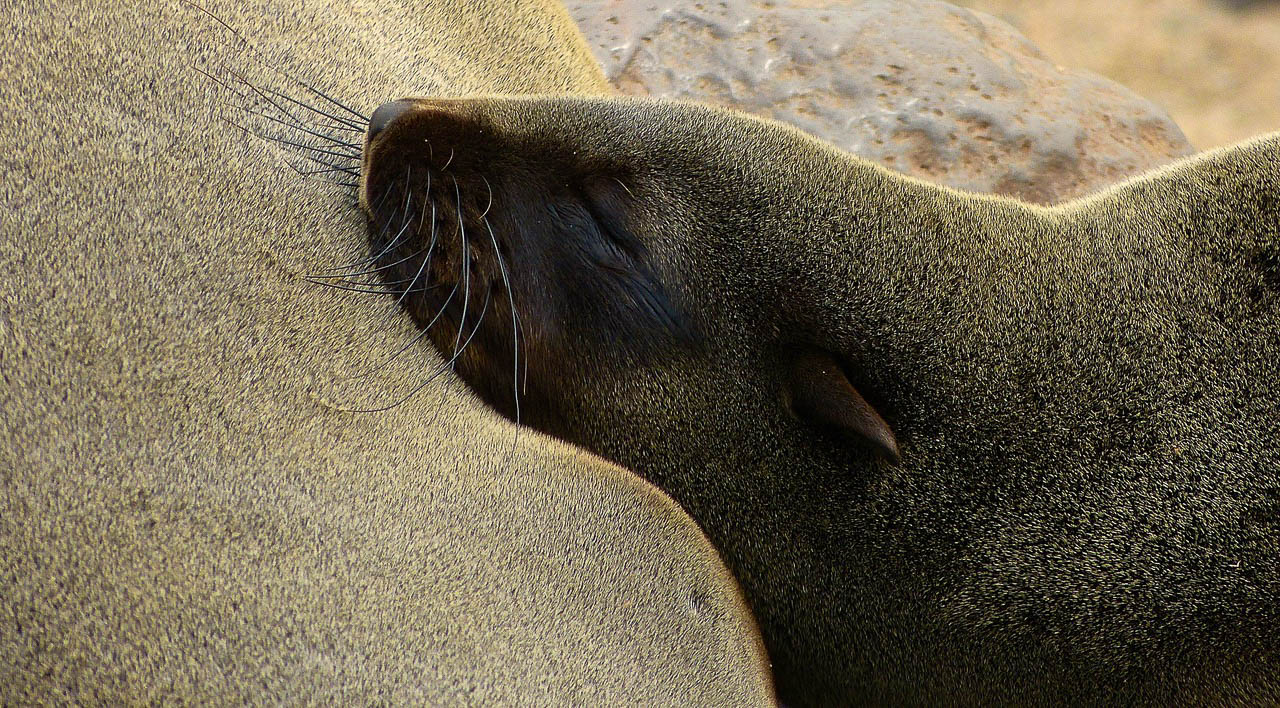
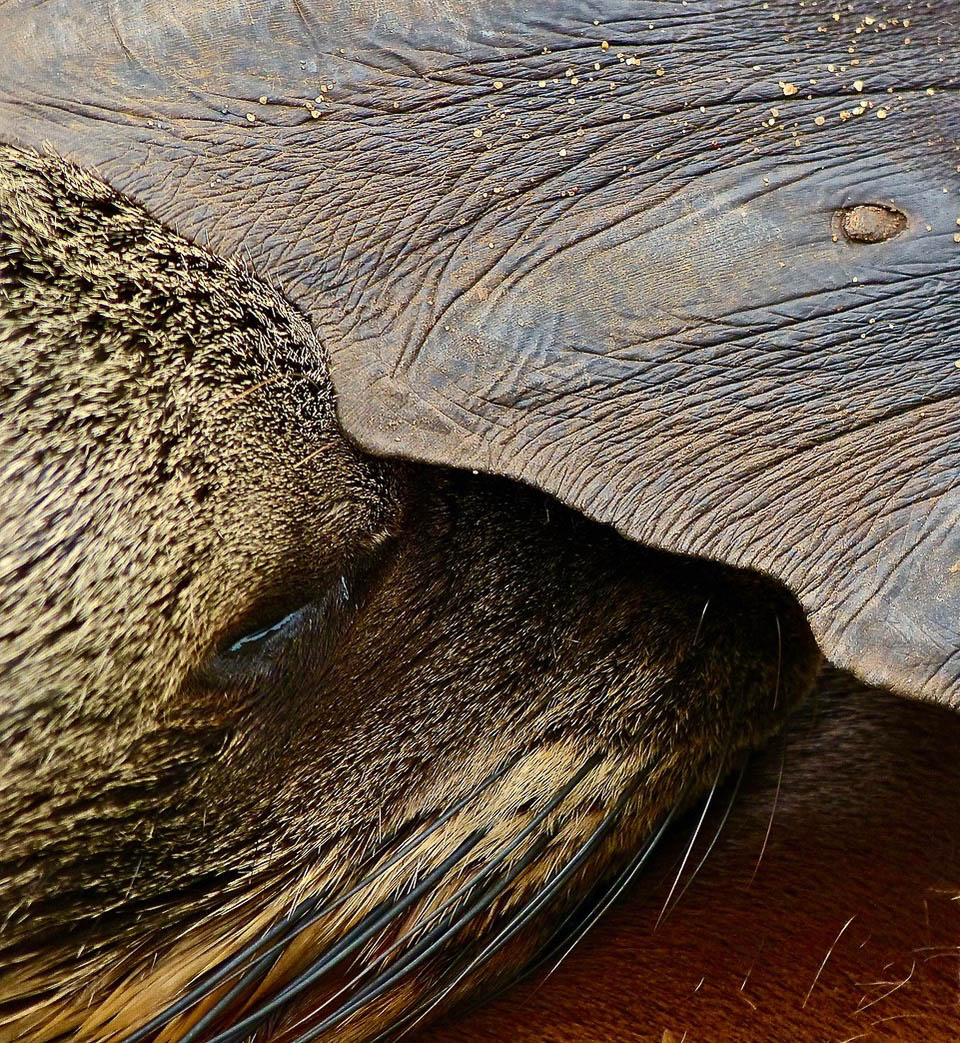
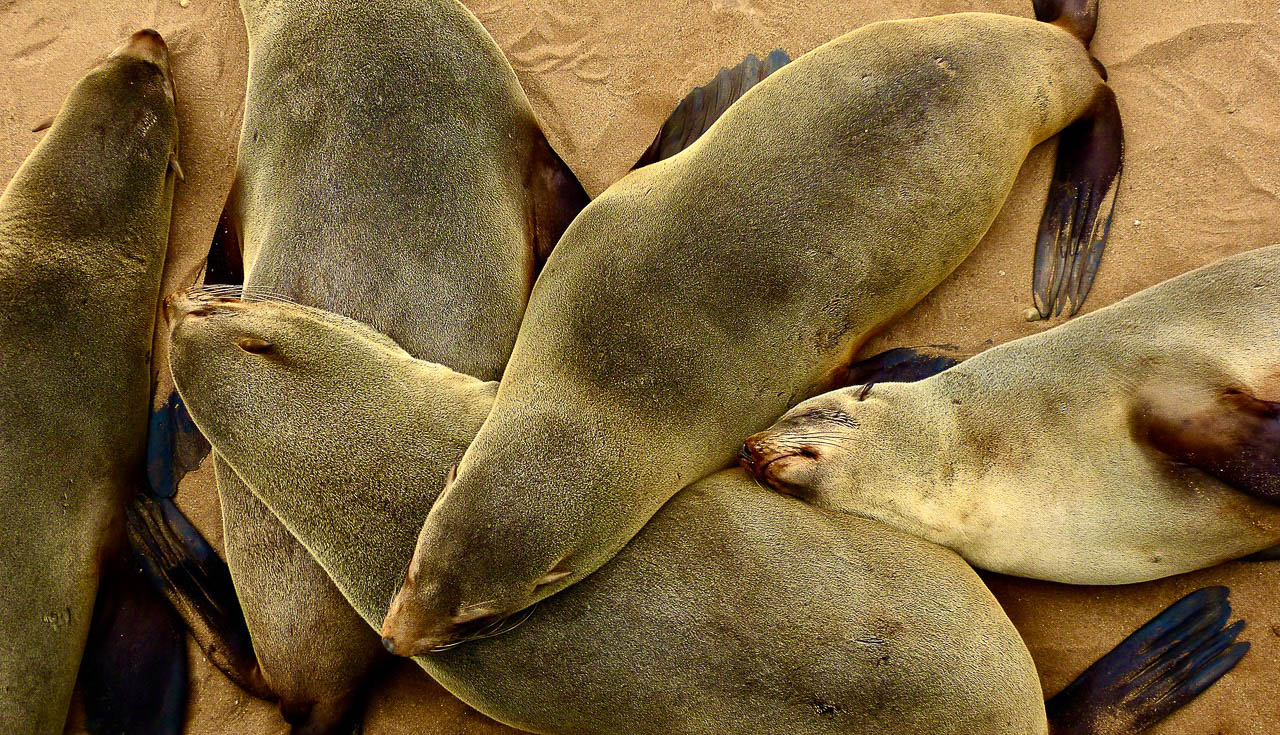


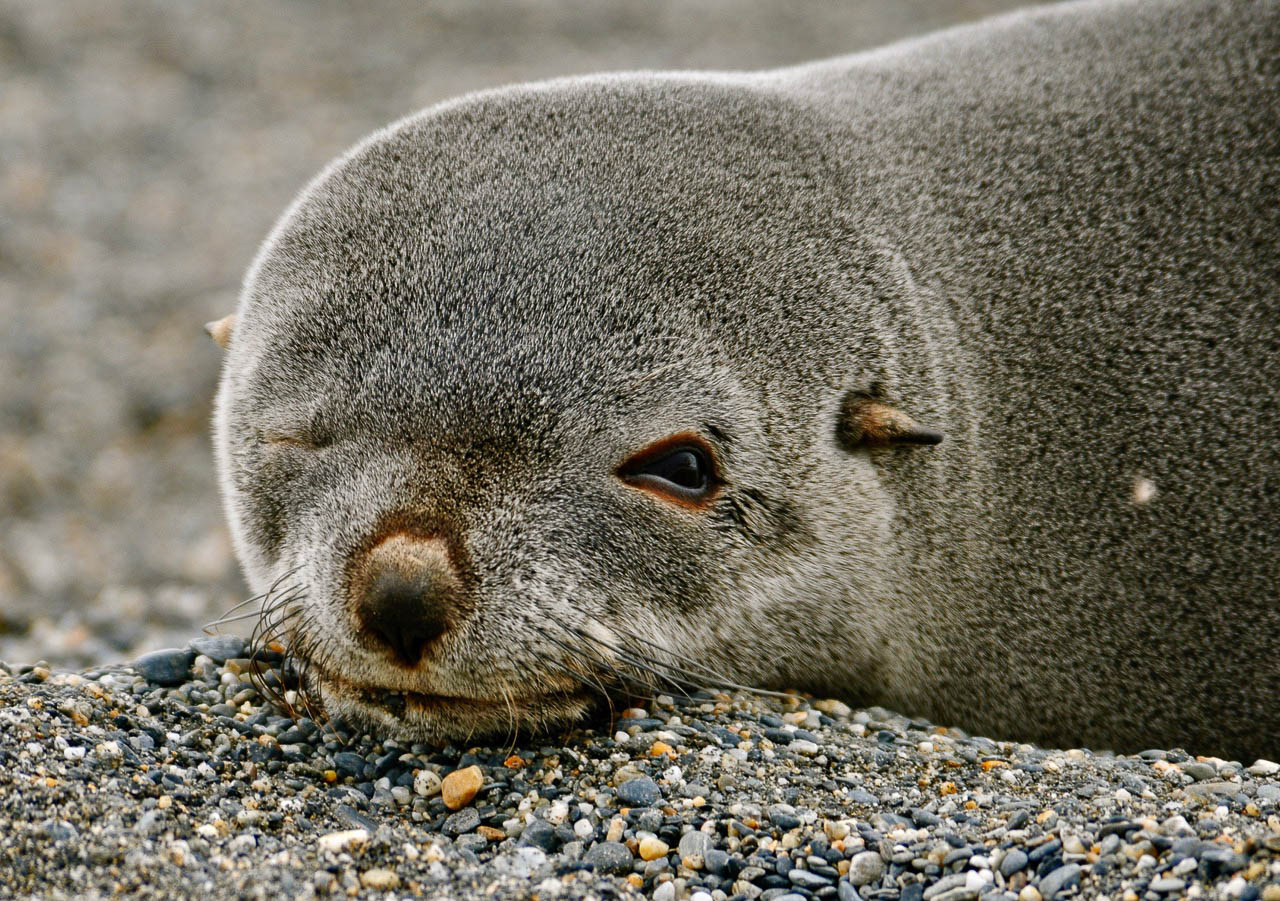
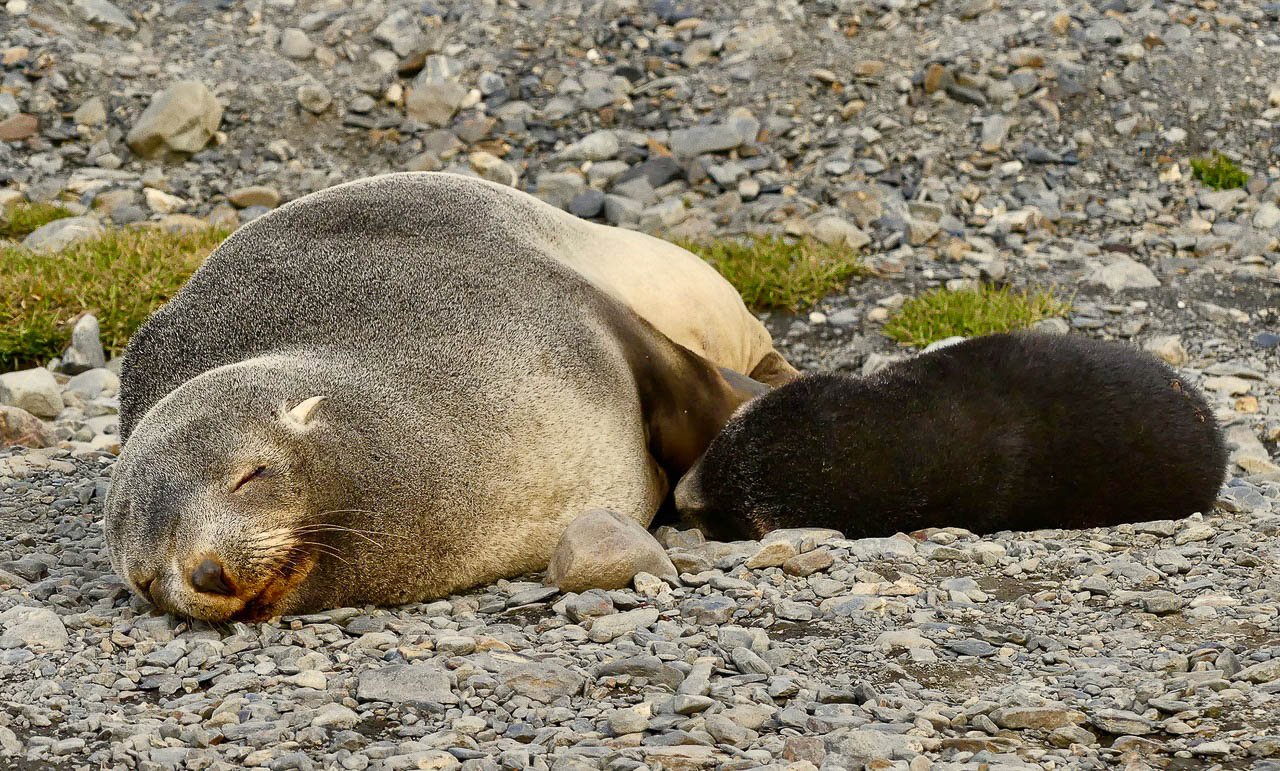
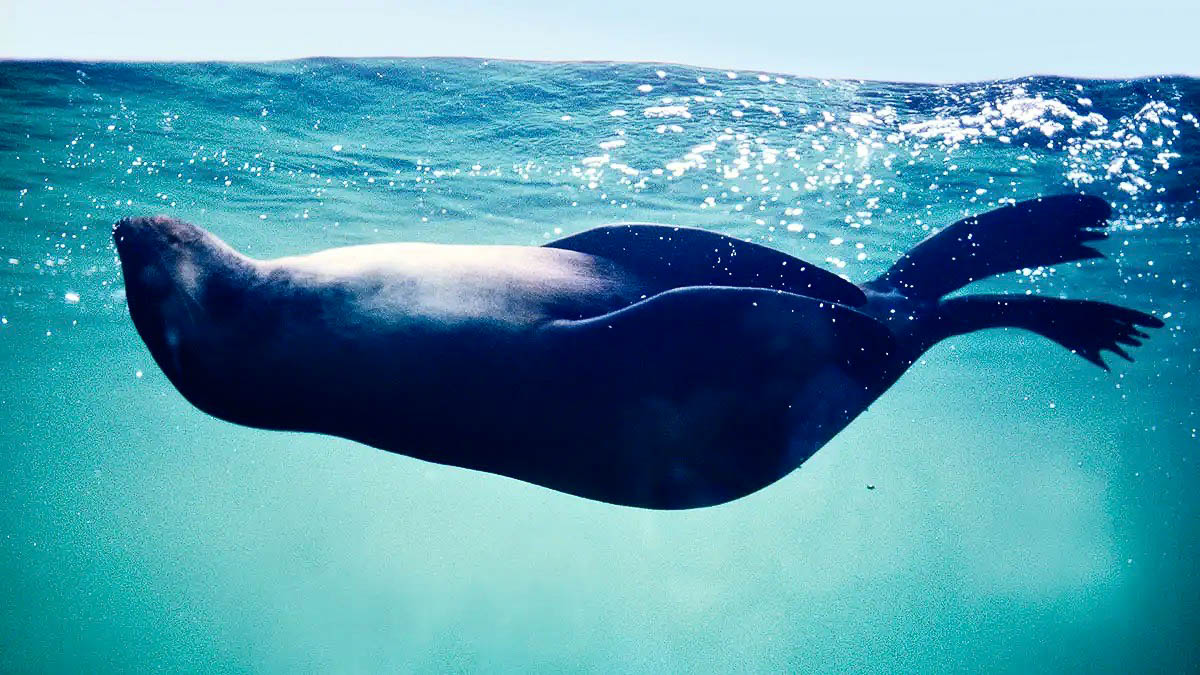
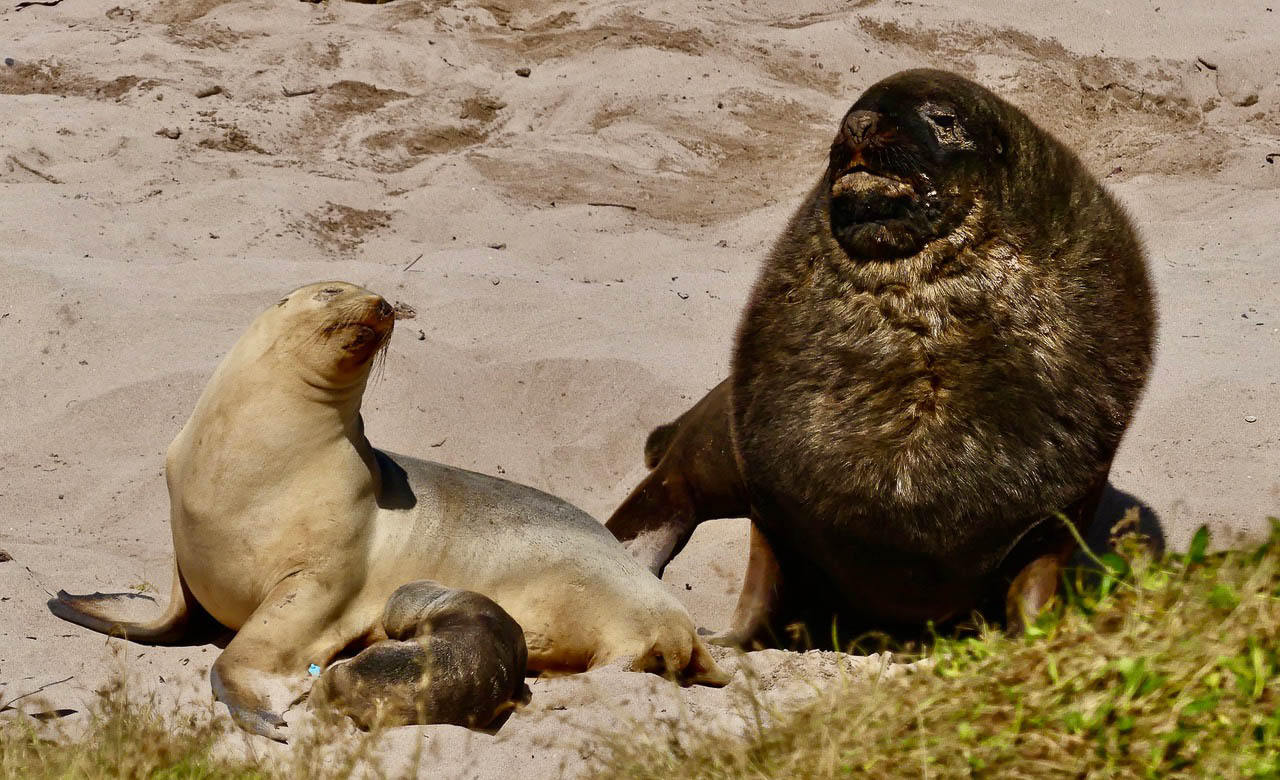

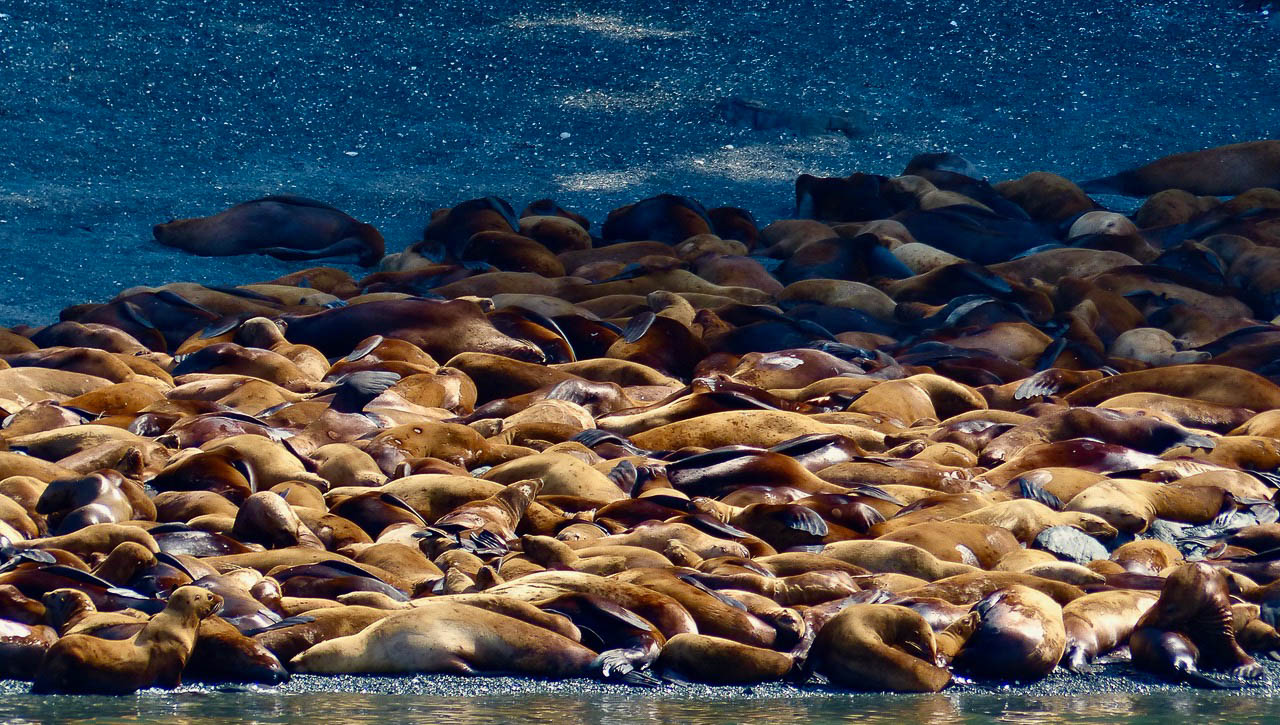
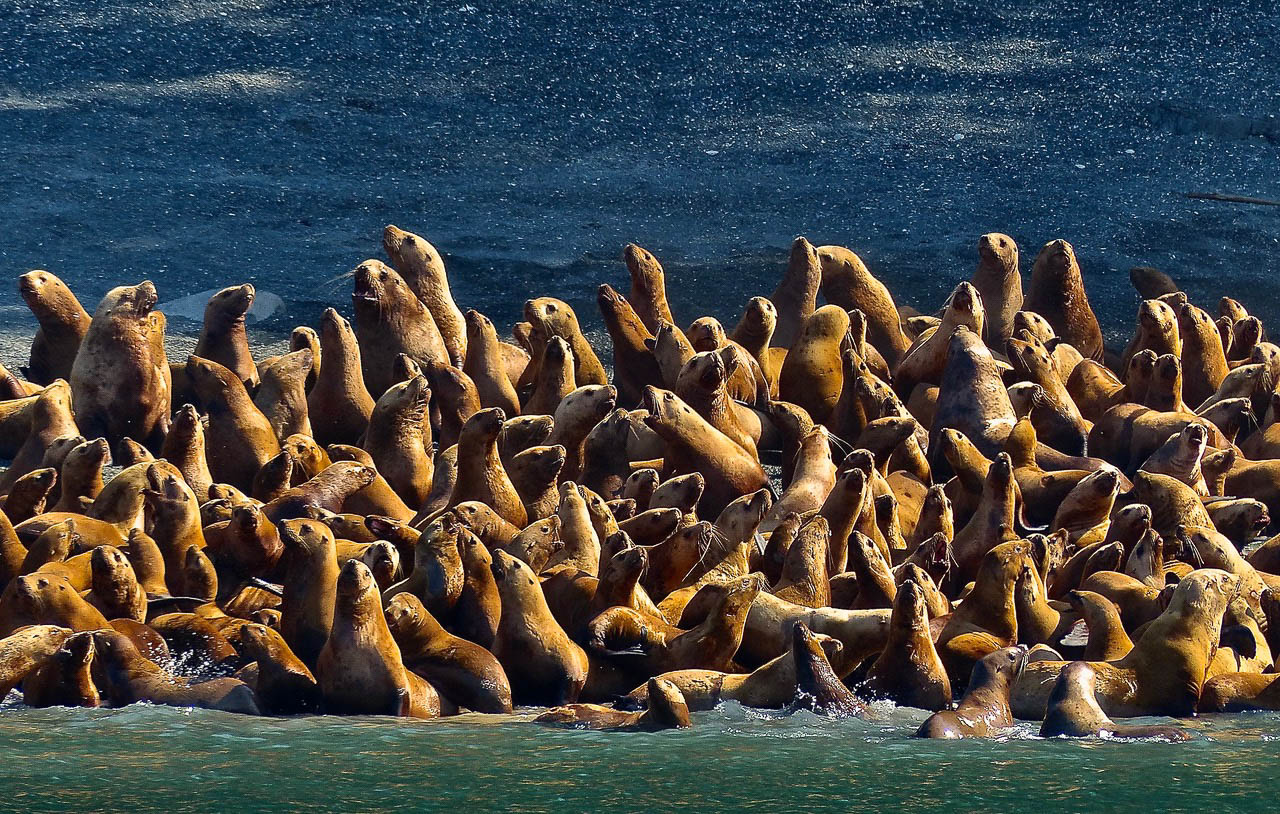

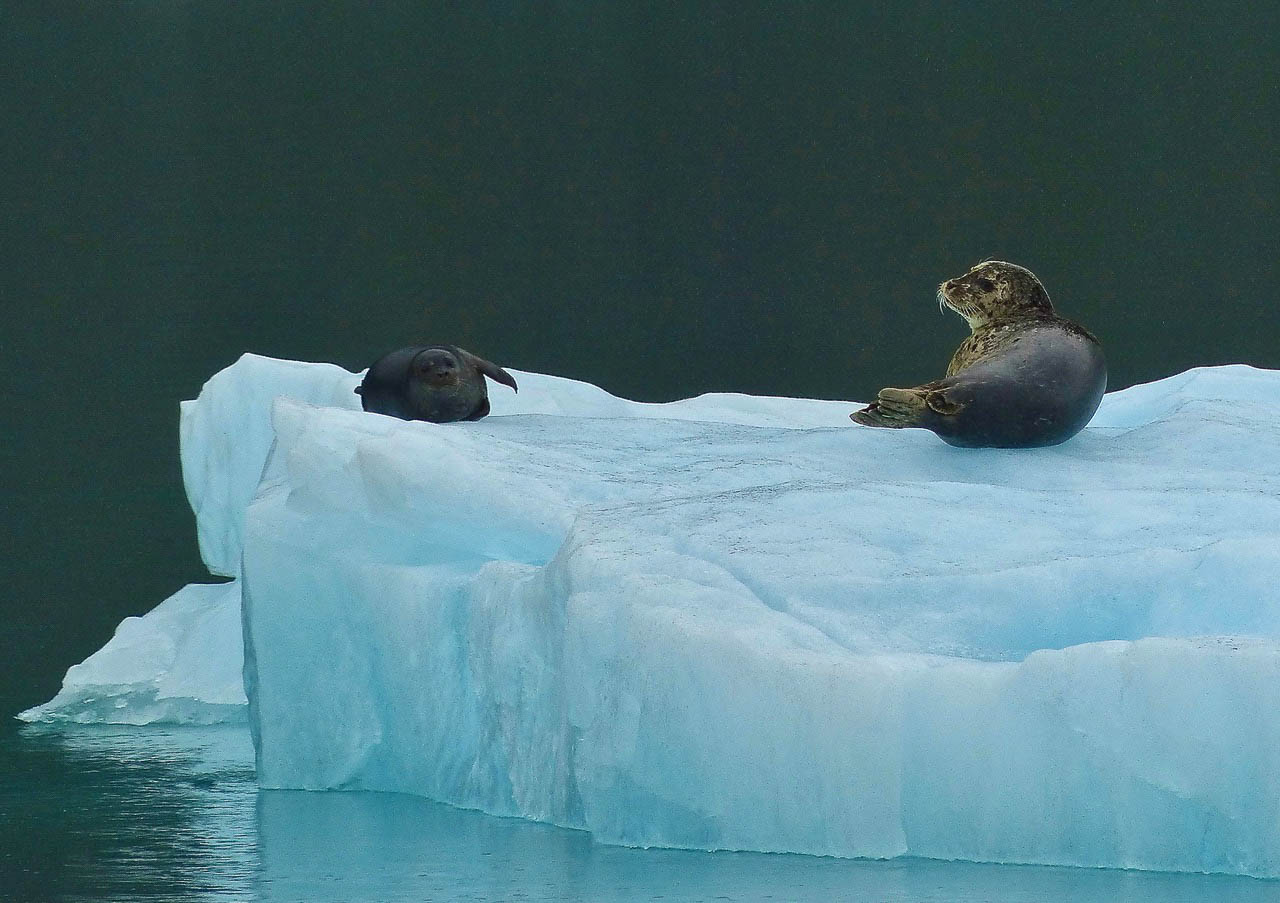
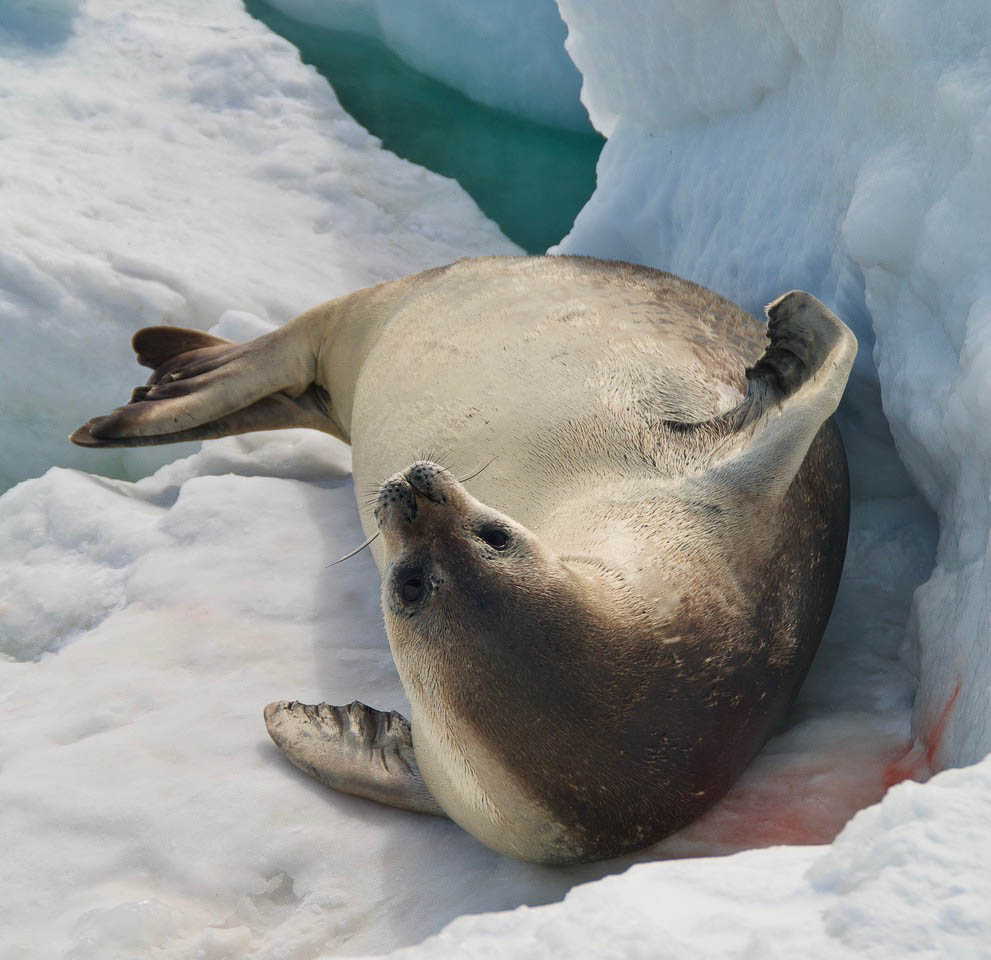
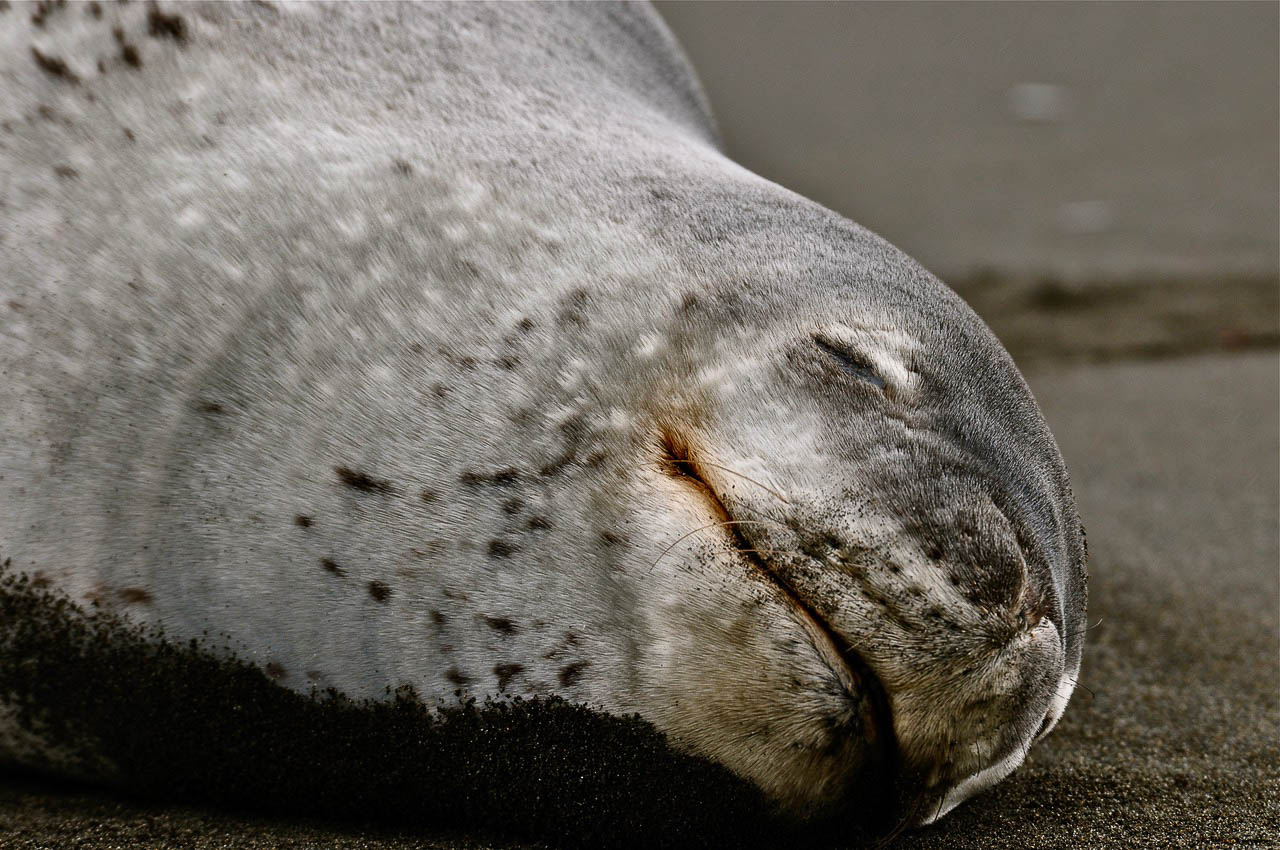
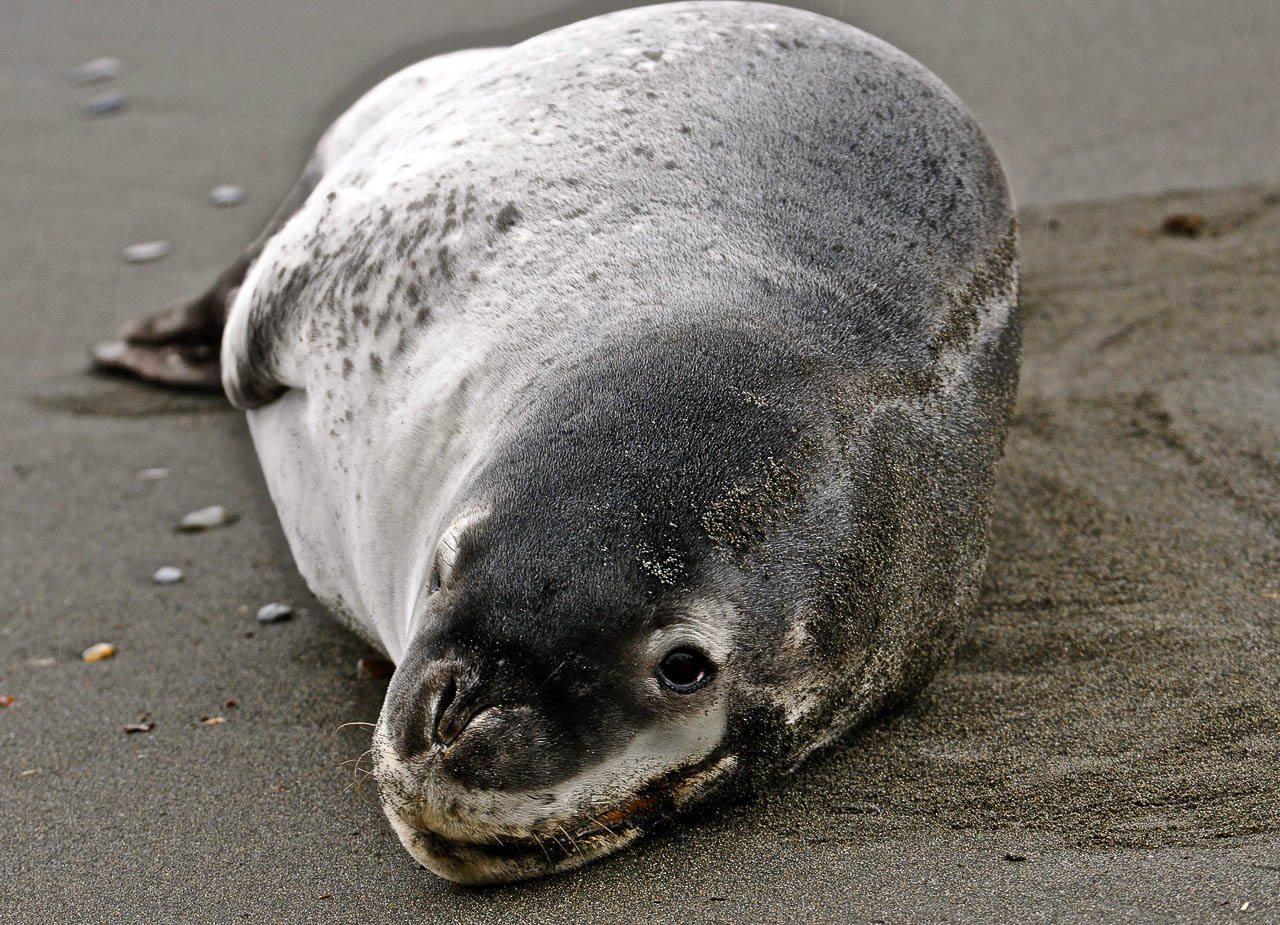

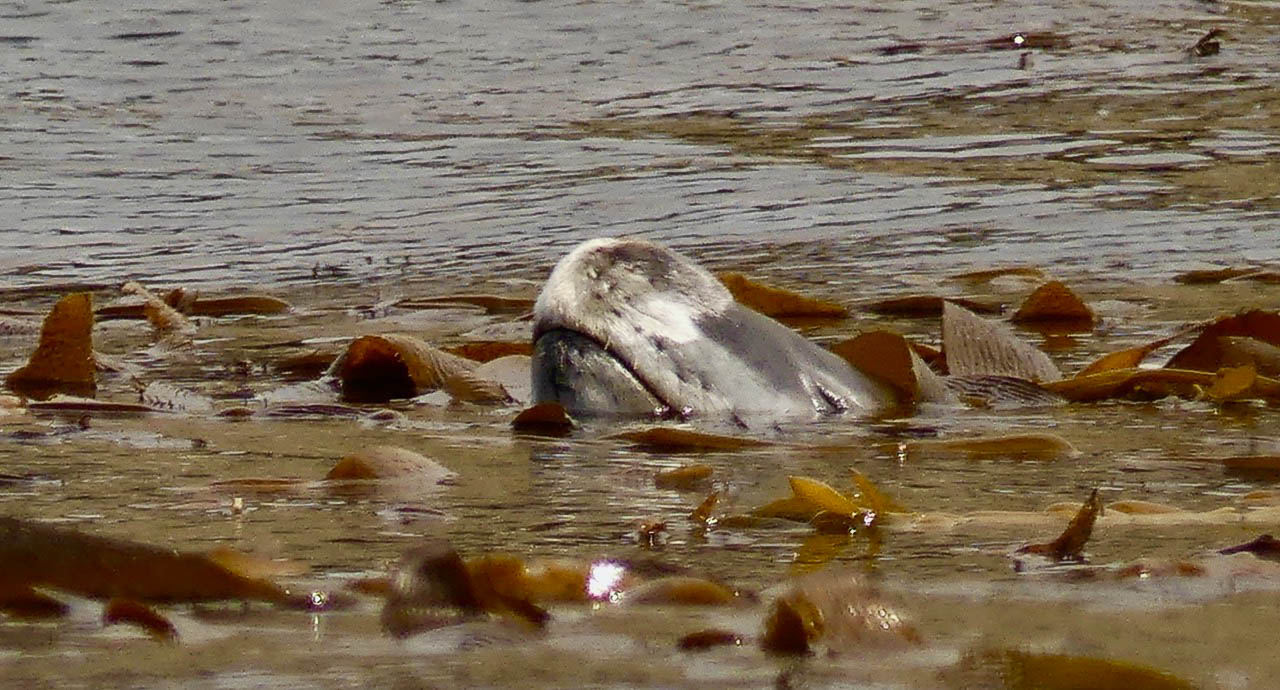


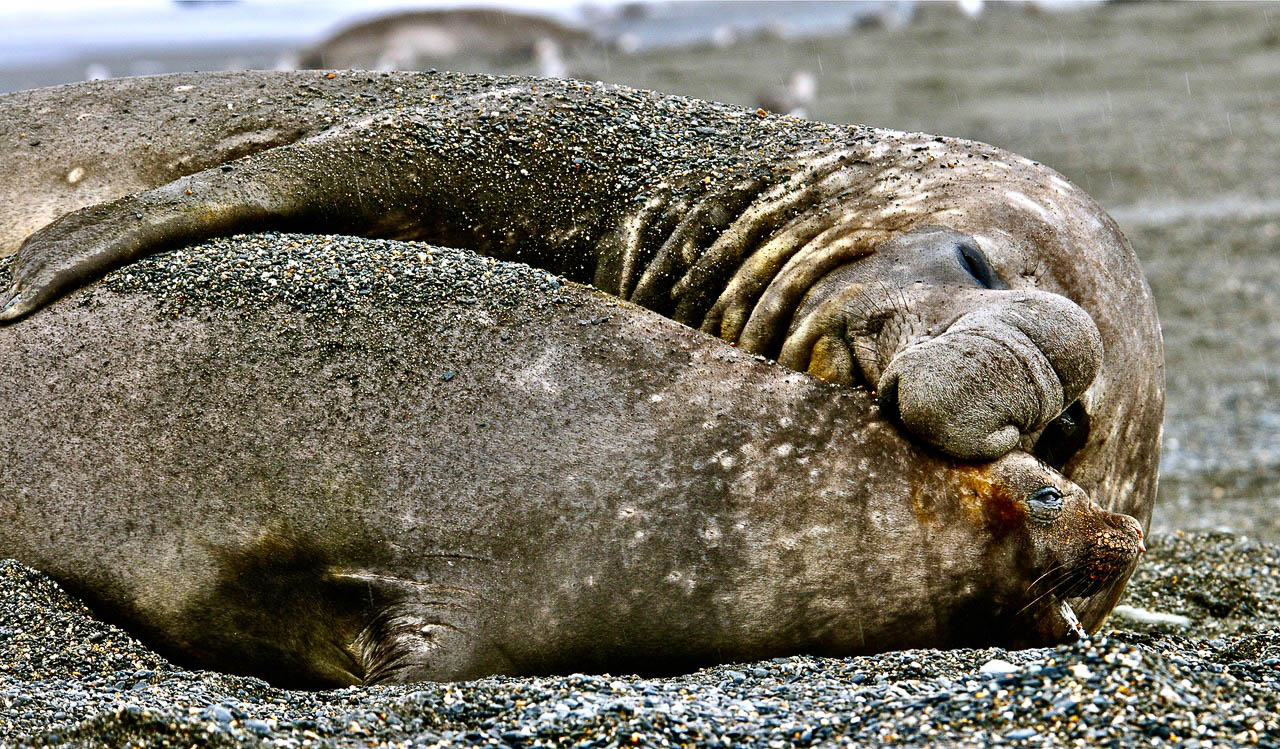

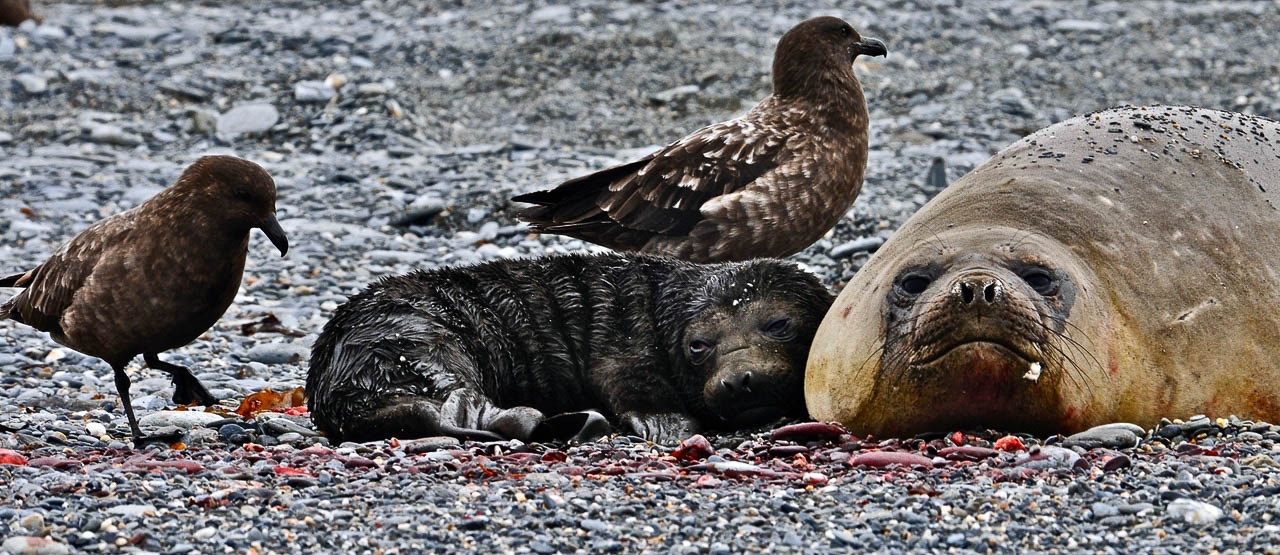
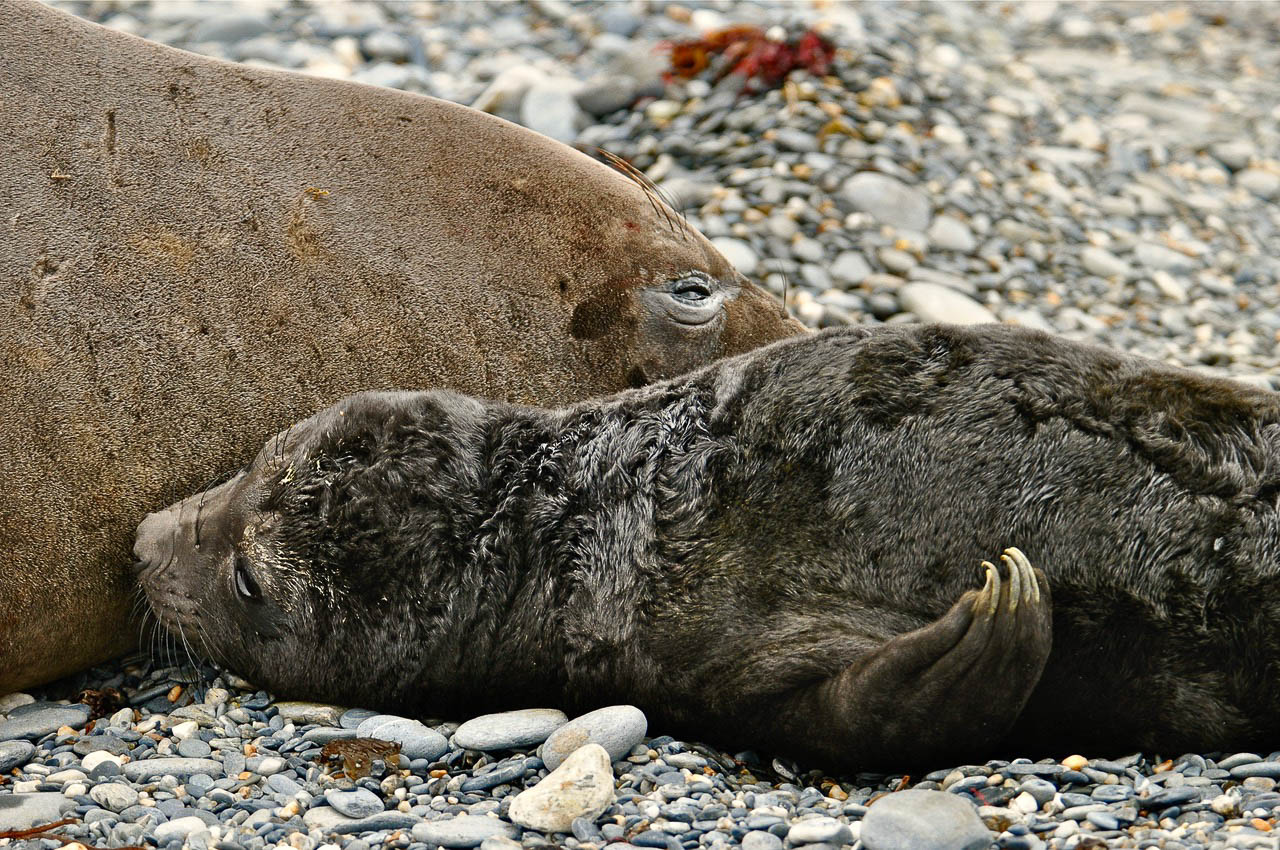
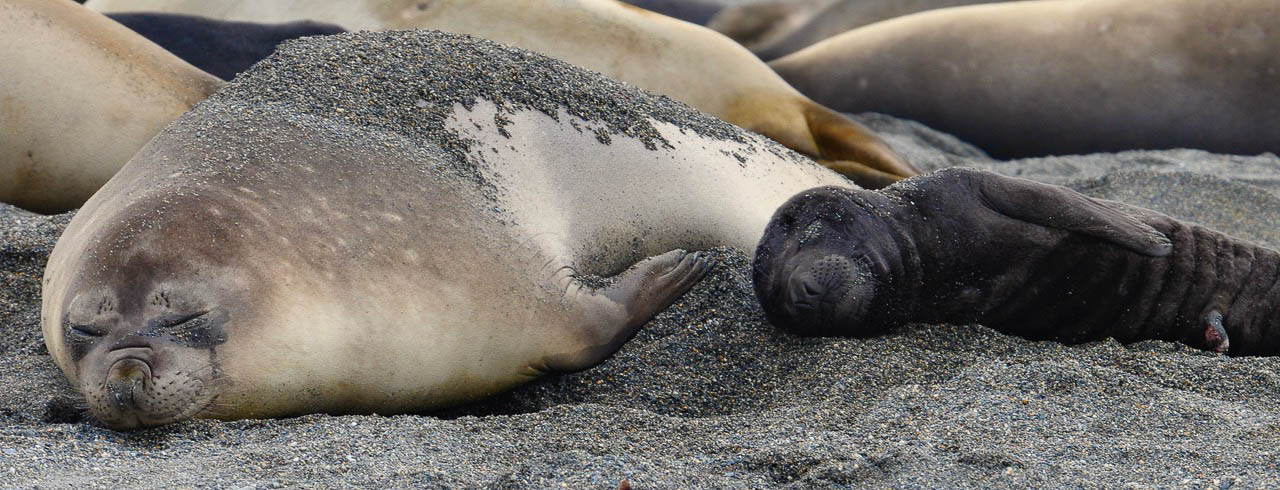
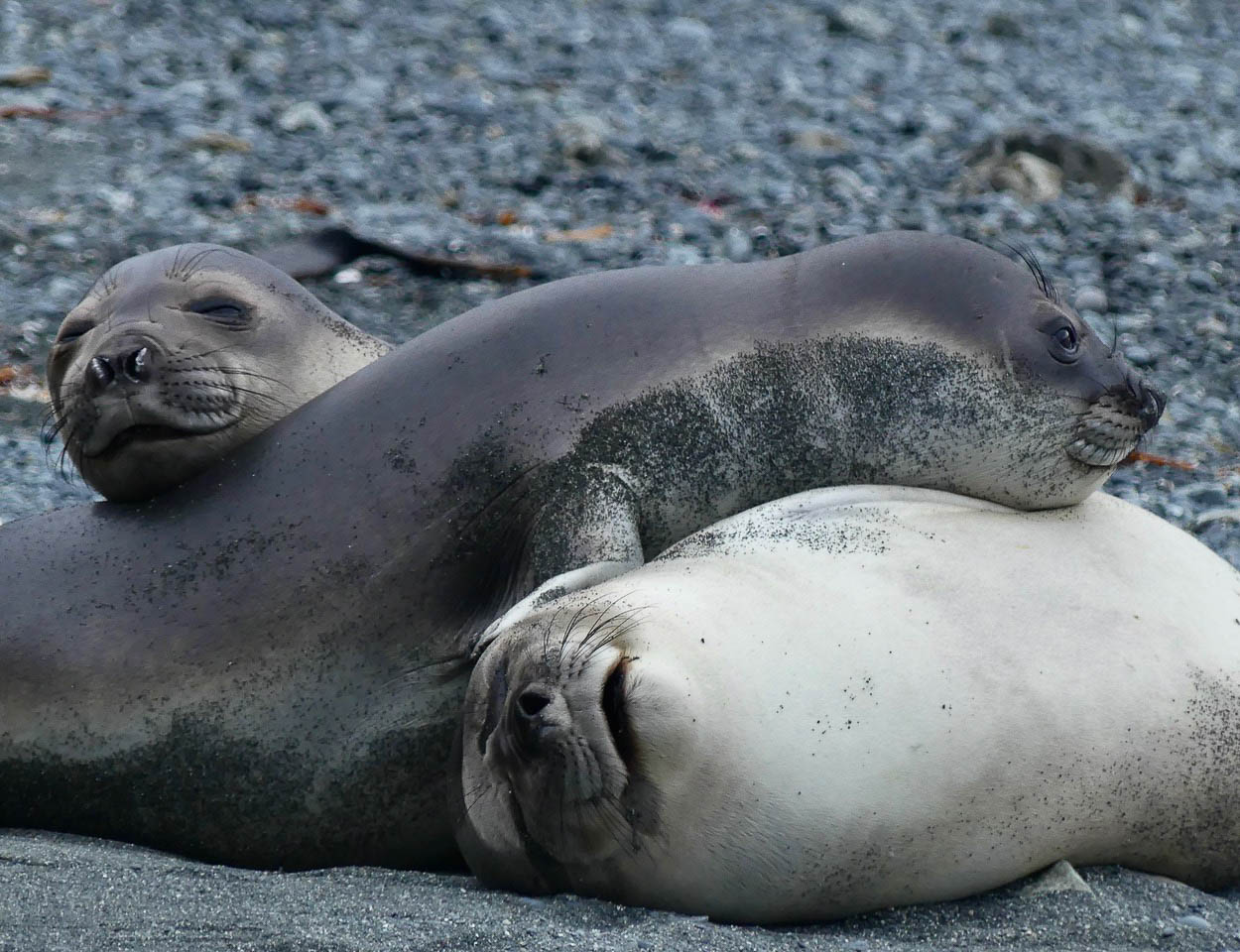

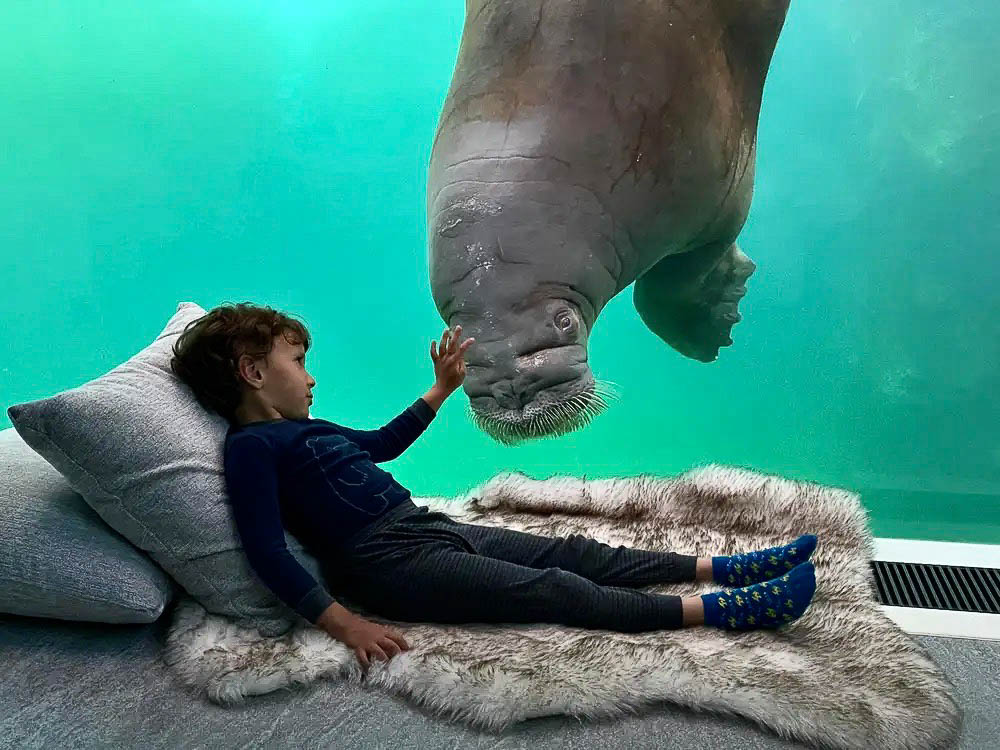
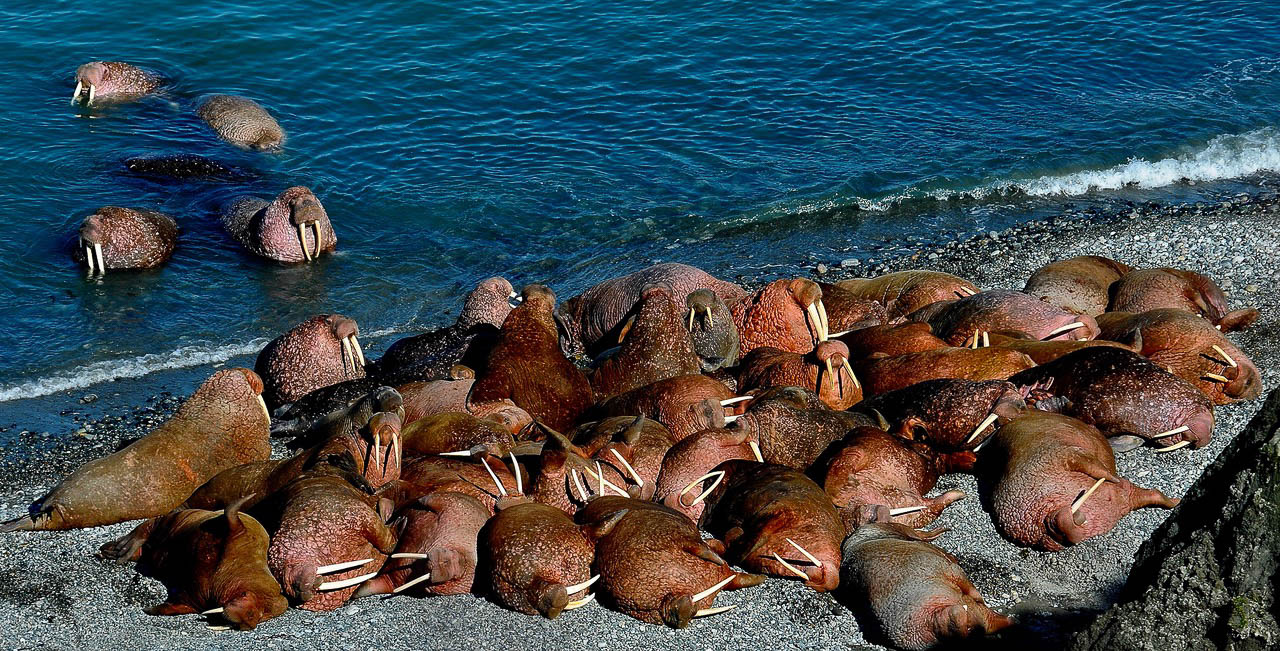
WOW Audrey , fascinating info about these amazing sea creatures and thier sleep habits and ways,
THANK YOU for the time you put in to share such wonderful facts about our amazing world.
something I never thought about! Thank you !